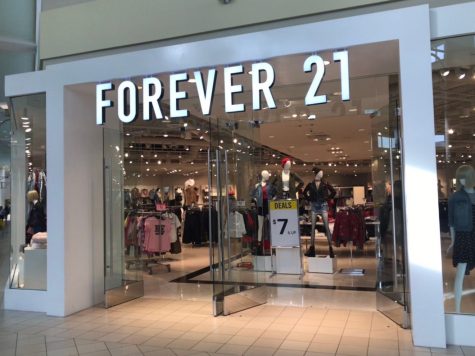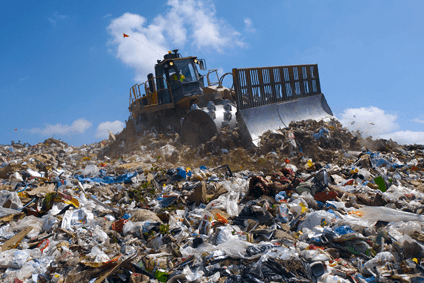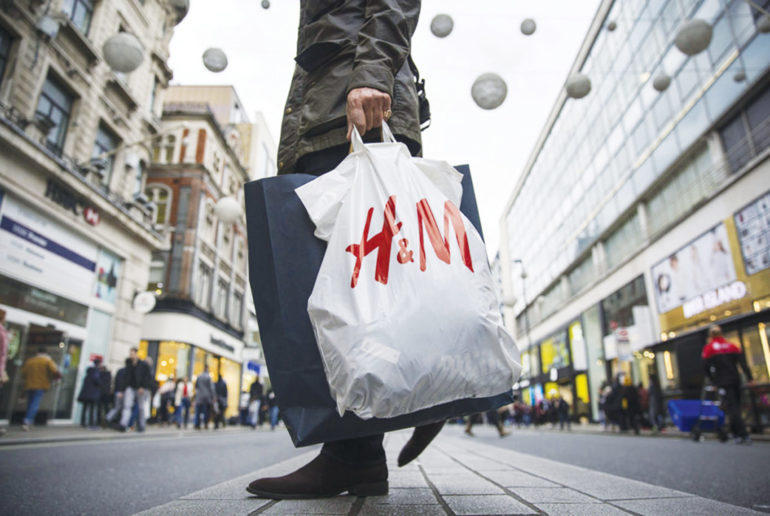Problems with Fast Fashion – How You Can Make Your Wardrobe More Ethical
As fast fashion takes over the fashion industry, trendy clothes are now being mass produced, making them cheaper. These clothes are only on trend for a little while, going out of style quickly so that consumers will continue to purchase more clothes in order to stay up to date. They are not made to last long, purposefully designed to wear out in just a few washes so that there’s a need for a constant wardrobe renewal. The rise of social media and internet celebrity culture has accelerated the problem even more. Your favorite influencer makes a sponsored post with a fast fashion brand, which naturally drives a desire to make a trendy and inexpensive purchase. Common fast fashion brands include many stores you’ve likely heard of or maybe even shopped at like H&M, Forever 21, Urban Outfitters, GAP, and Uniqlo. But doesn’t the idea of trendy clothes for cheap prices sound a little too convenient? There are many environmental and ethical issues that come with these mass produced clothes. Fast fashion is slowly but surely destroying the planet.

Environmental Impact
More than 60% of fabric fibers are made out of synthetic fabric, which derives from fossil fuels and therefore doesn’t decay. These plastic-based materials shed hundreds of microplastic fibers every time you wash them and, through a filtering system, find its way into oceans and waterways. According to the World Bank, 20% of water pollution comes from textile dyeing and treatment. Textile wastes are growing and continue to fill up the landfills too; they take up 9.5% of all solid waste in the US every year. Both producing and transporting textiles also require a lot of energy, resulting in increased emissions of greenhouse gases and CO2.
Ethical problems
Major companies will outsource to developing countries and hire a cheap child labor force there in effort to cut down the cost, and these labor forces work under a horrible unhygienic conditions. These clothing pieces are usually made in sweatshops, which are factories where manual workers are employed at insufficient low wages for long hours under poor and dangerous conditions and pose many health risks in second and third world countries.
Promotes Over-consumption
Approximately 150 billion articles of clothing are consumed each year: enough to provide a full wardrobe for every person in the world. We’ve been purchasing 400% more clothing today than we did 20 years ago. That doesn’t sound like too long ago, does it? We used to make fewer purchases, each of which were thoroughly considered, but present-day shopping has turned into a series of impulse purchases.

Although 100% sustainable fashion cannot exist in totality, it’s important to become more sustainable and ethical by taking little steps! So, how can we contribute?
Choose Second-Hand
Thrifting has been much popular among members of Generation Z within the past decade. Stores such as Goodwill are in every town and are very affordable! If you look through the store, you can even find vintage brand clothing. Thrift stores aren’t just for clothing, but they have ceramics, electronics, baskets, and much more stuff. There are even online thrift shops such as thredUP and depop. You could also get hand-me-downs from your parents or siblings and alter them as you like.
Upcycling clothes you already own
If you’re tired of your current wardrobe, instead of throwing them away, try upcycling them and let your creativity shine! From embroidering and sewing to tie-dying and painting, give your old clothes a little makeover.
Think twice before throwing away your old clothes
If the clothes are in good condition, donating or selling are a great alternative to throwing them away! If it’s out of your style, upcycling is always an option as well.
Think twice before purchasing clothes
Before purchasing a clothing item, think to yourself, “Do I really need this?” This will not only help the environment, but it can help your wallet as well. Buying less items is the best way to contribute to ethical fashion.
Wash only when needed
The average household does almost 400 loads of laundry every year, consuming about 60,000 liters of water, not to mention the amount of energy that the dryer uses. On top of that, synthetic materials shed hundreds of microplastic fibers every time it gets washed. Some clothes don’t need to be washed after every use.
By avoiding and being more conscious about fast fashion, you can take your part in reducing our impact.
Works Cited
Stanton, Audrey. “What Is Fast Fashion, Anyway?” The Good Trade, The Good Trade, 24 Apr. 2020, www.thegoodtrade.com/features/what-is-fast-fashion.
Schlossberg, Tatiana. “How Fast Fashion Is Destroying the Planet.” The New York Times, The New York Times, 3 Sept. 2019, www.nytimes.com/2019/09/03/books/review/how-fast-fashion-is-destroying-the-planet.html.
“The Monster in Our Closet: Fast Fashion & Textile Waste on the Rise.” Center for EcoTechnology, 9 Mar. 2020, www.centerforecotechnology.org/fast-fashion-textile-waste/.
Stinson, Rachel. “Ethical Fashion 101: The Top 5 Ethical Issues in the Fashion Industry.” Eco Warrior Princess, 23 Oct. 2018, ecowarriorprincess.net/2016/09/ethical-fashion-101-the-top-5-ethical-issues-in-the-fashion-industry/.
Foussianes, Chloe. “What Is Fast Fashion, and Why Is Everyone Talking About It?” Town & Country, Town & Country, 17 Jan. 2020, www.townandcountrymag.com/style/fashion-trends/a30361609/what-is-fast-fashion/.

Moyu is a senior at Kingwood High School and is thrilled to be a part of the Mustang Monthly staff for a fourth year! Moyu is passionate about history...








Arun • Aug 18, 2020 at 4:36 am
That’s quite a revelation! Especially the impact of microfibre on our environment and the engagement of child labour for its production is a grave ongoing issue. I wish more and more people read this informative content and follow what the author has tried to convey. Please visit at https://www.hair-carnival.com/ .
Tobi • Jul 23, 2020 at 10:26 pm
this is really well written and informative! thank you for teaching me something new (⌒▽⌒) v cool